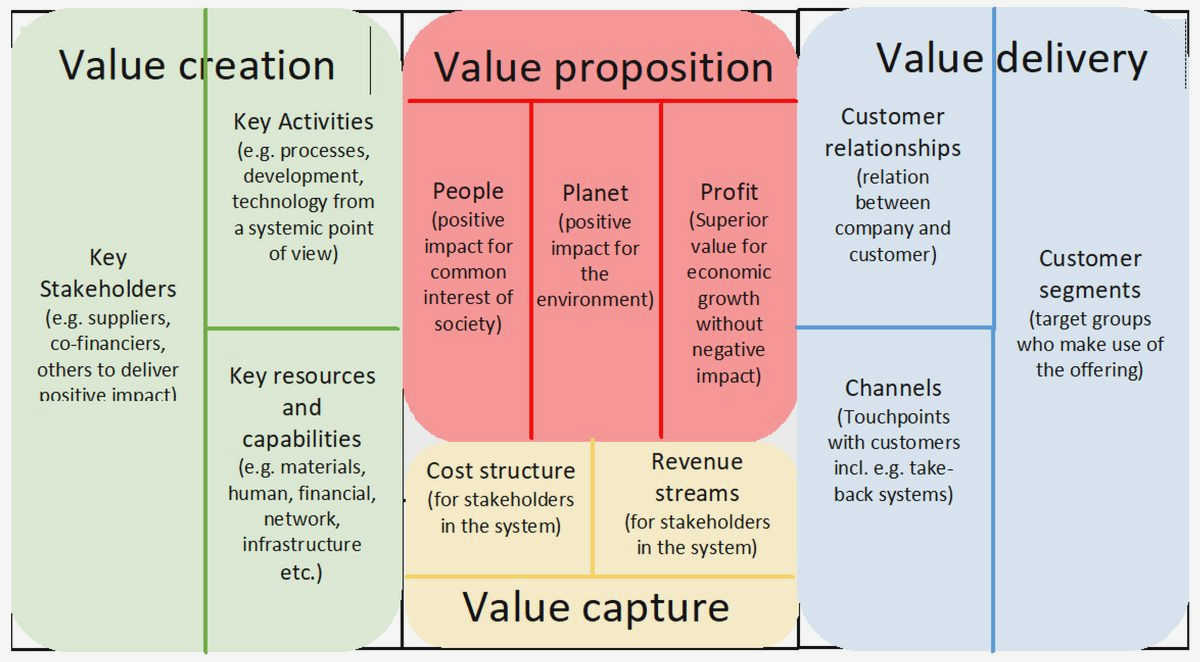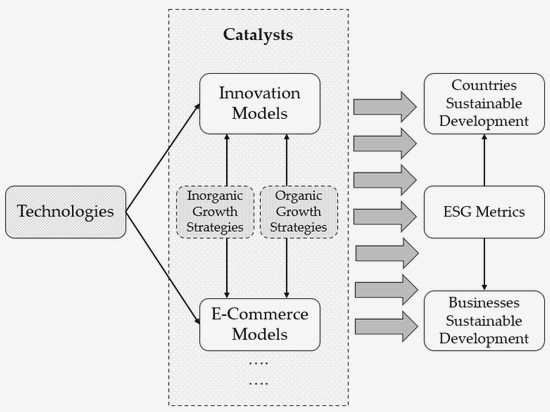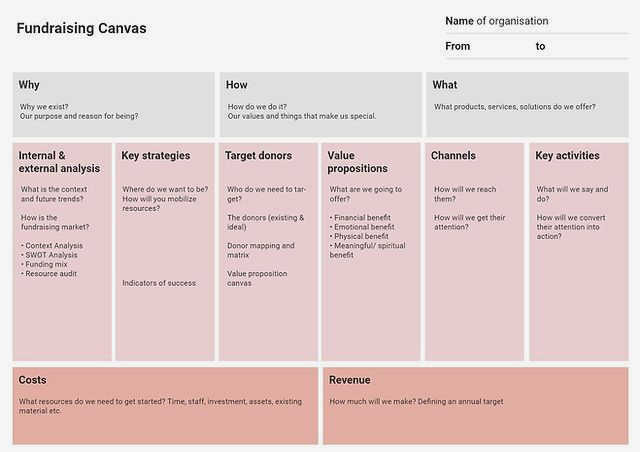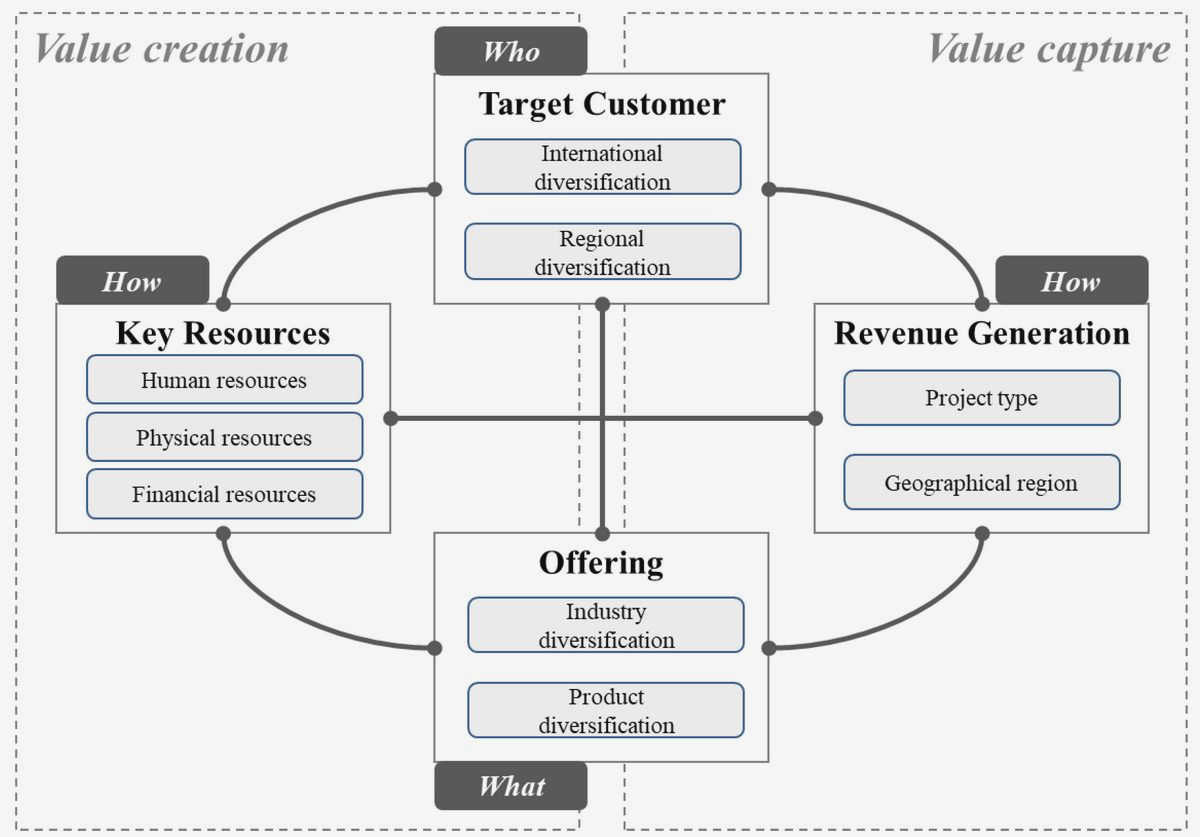In today’s rapidly changing world, civil society organizations are facing increasing challenges when it comes to securing funding for their important work. Traditional sources of funding, such as grants from foundations and government agencies, are becoming more competitive and often come with restrictions and limitations.
To ensure the long-term sustainability of their organizations, civil society leaders must explore and embrace new revenue streams. Diversifying the sources of funding can provide stability and flexibility, allowing organizations to continue their vital work even in uncertain times.
One potential avenue for diversifying revenue streams is through earned income. This can include selling products or services related to the organization’s mission, such as merchandise or consulting services. By leveraging their expertise and resources, organizations can generate income while also furthering their mission and expanding their impact.
Another approach to diversifying revenue streams is through partnerships and collaborations. By forging strategic alliances with other organizations or businesses, civil society organizations can access new funding opportunities and tap into different networks. Collaborative projects, joint ventures, and shared fundraising campaigns can not only provide financial support but also create synergies and amplify the organizations’ collective impact.

Finally, individual giving and private donations can also play a significant role in diversifying revenue streams. Creating a strong and compelling case for support, engaging with potential donors, and building relationships based on trust and transparency can result in regular and sustained support from individuals who are passionate about the organization’s mission. Earning the trust and loyalty of individual supporters can provide a stable base of funding and empower organizations to weather financial uncertainties.
By diversifying revenue streams, civil society organizations can strengthen their financial sustainability and ensure the continuation of their important work. Exploring new avenues, fostering partnerships, and engaging with individual supporters are key ingredients in building a solid funding model that can stand the test of time.
Importance of Diversifying Revenue Streams
Diversifying revenue streams is essential for the sustainability and growth of civil society organizations. Relying on a single source of funding, such as government grants or donations from a specific group, can make an organization vulnerable to financial instability. By diversifying their revenue streams, organizations can reduce their dependence on a single source and create a more sustainable financial model.
Increased Financial Security: Diversification allows organizations to spread their financial risk across multiple sources. This reduces the impact of a potential loss of funding from one source and provides a safety net in case of unforeseen circumstances. For example, if a government grant is reduced or cut, having alternative revenue streams can help to bridge the gap and ensure the continuation of programs and services.
Flexibility and Adaptability: Diversifying revenue streams enables organizations to be more flexible and adaptable to changing economic and social environments. It allows them to explore new opportunities, respond to emerging needs, and experiment with innovative approaches. By having multiple revenue streams, organizations can better navigate through challenges and maintain their relevance in a rapidly changing landscape.
Increased Autonomy: Diversification of revenue streams gives organizations greater control over their activities and decision-making processes. When an organization relies on a single funder, they may be subject to their priorities, restrictions, and requirements. By diversifying their revenue sources, organizations can have more autonomy in selecting projects and initiatives that align with their mission and values.
Capacity Building: Diversifying revenue streams can also contribute to the capacity building of civil society organizations. It encourages organizational growth and the development of new skills and capabilities. Organizations that actively seek diverse revenue sources are often more adept at financial management, fundraising, and asset generation, which can enhance their overall sustainability and effectiveness.
Understanding Different Types of Revenue Streams
In order to build sustainable funding models for civil society organizations, it is essential to understand the different types of revenue streams that can be utilized. Diversifying revenue streams can provide stability and long-term financial viability.
1. Grants and Donations:
Grants and donations are a common source of revenue for civil society organizations. They can come from government agencies, foundations, corporations, and individuals. These funds are typically dedicated to specific projects or programs and require organizations to demonstrate their impact and effectiveness.
2. Membership Fees:
Membership fees can be an important source of revenue for organizations that have a dedicated base of supporters. By offering exclusive benefits and access to members, organizations can generate income while fostering a sense of community and engagement among their supporters.
3. Earned Income:
Earned income refers to revenue generated through the sale of goods or services directly related to an organization’s mission. This could include ticket sales, merchandise, or fees for services provided. By leveraging their expertise and resources, organizations can create sustainable revenue streams while also advancing their mission.
4. Corporate Sponsorship:
Corporate sponsorship involves partnering with businesses that align with an organization’s values to provide financial support. In exchange, the organization may offer branding opportunities, event sponsorship, or other promotional benefits. This type of revenue stream can provide a substantial and consistent source of funding.
5. Social Enterprise:
Social enterprise involves creating and operating business ventures that exist primarily to generate revenue for a social or environmental purpose. By combining commercial strategies with a social mission, organizations can create sustainable revenue streams while also addressing societal challenges.
6. Endowments and Investments:
Endowments and investments can provide organizations with a long-term and stable source of funding. By investing funds and generating returns, organizations can build a financial cushion and ensure their operations for the future. However, this type of revenue stream requires careful financial management and oversight.
In conclusion, understanding the different types of revenue streams available to civil society organizations is crucial in building sustainable funding models. By diversifying revenue sources, organizations can reduce reliance on a single funding stream and ensure their long-term financial stability.
Case Studies on Successful Funding Models in Civil Society
1. XYZ Foundation: Diversification of Funding Sources
The XYZ Foundation, a non-profit organization working in the field of education, has successfully diversified its funding sources to ensure long-term sustainability. Instead of relying solely on government grants, the foundation has actively sought partnerships with corporate donors, individual philanthropists, and international organizations. This approach has allowed them to access a wider pool of resources and reduce their dependence on any single funding source.
2. ABC Association: Social Enterprise Initiatives
The ABC Association has developed a successful funding model by integrating social enterprise initiatives into their operations. They have established income-generating ventures such as cafes, shops, or event services that align with their mission and values. The profits generated from these ventures are reinvested into their programs and activities, providing a sustainable source of funding. Additionally, these ventures also serve as platforms to raise awareness about the association’s cause and engage with the community.

3. LMN Network: Grants and Crowdfunding
LMN Network, a network of grassroots organizations working on environmental issues, has adopted a funding model that combines grants and crowdfunding. They actively pursue grants from foundations and government agencies that support their cause, while also leveraging the power of crowdfunding platforms to engage their community and raise additional funds. This dual approach has not only helped them secure necessary funding but also fostered a sense of ownership and support among their supporters.
4. DEF Alliance: Corporate Partnerships and Sponsorships
The DEF Alliance, a coalition of organizations working in the field of healthcare, has successfully secured sustainable funding through strategic corporate partnerships and sponsorships. They have identified corporations with a shared vision and aligned corporate social responsibility goals and have established mutually beneficial partnerships. This has allowed them to access financial support as well as non-financial resources such as industry expertise, networks, and in-kind support, thereby strengthening their overall impact.
5. UVW Foundation: Membership and Individual Donations
The UVW Foundation has built a strong funding model around membership and individual donations. They offer various membership tiers with different benefits, such as access to exclusive events or content, to incentivize individuals to become members. Additionally, they actively promote individual donations through online platforms and fundraising campaigns. By nurturing a community of supporters, the foundation has been able to rely on a steady stream of support from their members and individual donors.
Strategies for Identifying New Revenue Opportunities
Building a sustainable funding model for civil society organizations involves diversifying revenue streams. One strategy for achieving this is to identify new revenue opportunities. Here are some strategies that can help you in this regard:
1. Conduct Market Research
In order to identify new revenue opportunities, it is important to have a good understanding of the market. Conduct market research to identify emerging trends, customer needs, and potential gaps where your organization can provide value. This will help you identify new revenue streams and position your organization accordingly.
2. Assess Current Resources and Expertise
Take stock of your organization’s current resources and expertise. Identify any untapped resources or skills that can be leveraged to generate additional revenue. For example, if your organization has a strong research department, you could consider offering consultancy services or selling research reports to generate revenue.
3. Explore Partnerships and Collaborations
Look for opportunities to collaborate with other organizations or businesses that align with your mission and values. By partnering with like-minded entities, you can access new markets, share resources, and explore joint revenue opportunities. Collaborations can range from co-hosting events to creating joint products or services.
4. Leverage Technology
Technology provides numerous opportunities for generating revenue. Explore ways to leverage technology to expand your reach and create new revenue streams. For example, you could develop an online platform to offer training courses, sell digital products, or provide online services. Embrace digital fundraising tools and platforms to reach a wider audience and attract new donors.
5. Engage with Your Community
Your community can be a valuable source of revenue opportunities. Engage with your community through events, workshops, and online platforms. Listen to their needs, gather feedback, and explore ways to meet their demands through innovative products or services. Building a strong relationship with your community can lead to sustainable revenue streams.
By applying these strategies, you can identify new revenue opportunities and develop a diversified funding model for your civil society organization. Remember to regularly evaluate and adapt your strategies to stay relevant and competitive in the ever-changing landscape.
Developing a Fundraising Plan
Creating a strong fundraising plan is crucial for the long-term sustainability of civil society organizations. A well-planned and diversified fundraising strategy can help organizations secure financial support from various sources and minimize dependence on a single funding stream.
1. Assess your organization’s needs and goals: Start by evaluating your organization’s financial needs and long-term goals. This will help you determine how much funding is required and what programs or initiatives need to be prioritized.
2. Research funding opportunities: Conduct thorough research to identify potential sources of funding that align with your organization’s mission and objectives. This can include grants, corporate sponsorships, individual donations, and government funding. Consider both local and international opportunities.
3. Create a fundraising calendar: Develop a fundraising calendar that includes key activities and events throughout the year. This will help you plan and organize your fundraising efforts in a structured manner. It’s important to consider timing, deadlines, and the availability of resources when creating the calendar.
4. Diversify your revenue streams: Relying on a single funding source can be risky. Aim to diversify your revenue streams by pursuing multiple fundraising strategies simultaneously. This can include online crowdfunding campaigns, membership fees, partnerships with other organizations, and revenue-generating activities or products.
5. Cultivate donor relationships: Building strong relationships with donors is essential for fundraising success. Engage donors regularly through personalized communication, updates on your organization’s work, and recognition of their contributions. Show your appreciation and involve them in your mission and impact.
6. Monitor and evaluate: Regularly monitor and evaluate the effectiveness of your fundraising plan. Track key metrics such as funds raised, donor retention rates, and the success of different fundraising strategies. Use this data to make informed decisions and adjust your plan as needed.
7. Seek professional assistance: If needed, consider hiring fundraising professionals or consultants who can provide expertise and guidance. They can help you identify new funding opportunities, develop compelling proposals, and optimize your fundraising efforts.

8. Communicate impact: Show donors and potential funders the impact of their contributions. Use storytelling, data, and visuals to demonstrate how their support makes a difference and contributes to the success of your organization’s mission.

9. Foster a culture of fundraising: Make fundraising a part of your organization’s culture by involving all staff members and volunteers in the process. Provide training and resources to empower them to be effective fundraisers and ambassadors for your cause.
10. Continuously adapt and innovate: The fundraising landscape is constantly evolving. Stay updated on emerging trends, technologies, and best practices in fundraising. Continuously adapt your approach and experiment with new strategies to maximize your fundraising potential.
Engaging Individual Donors and Supporters
Engaging individual donors and supporters is a crucial aspect of building sustainable funding models for civil society organizations. Individual donors can provide a steady and reliable source of funding, as well as bring valuable connections and expertise to the table.
Personalize your approach: When reaching out to potential individual donors and supporters, it is important to personalize your approach. Take the time to research and understand their interests, values, and philanthropic goals. Tailor your communication to reflect their specific concerns and explain how their support will make a meaningful impact.
Create a compelling story: One effective way to engage individual donors is by creating a compelling story that showcases the impact of your organization’s work. Use powerful storytelling techniques to convey the importance of your mission and the positive change you are striving to achieve. Make sure to highlight the specific outcomes and successes that have been made possible through donor support.
Cultivate long-term relationships: Building sustainable funding models requires cultivating long-term relationships with individual donors and supporters. Regularly communicate with them, providing updates on your organization’s progress and the impact of their support. Show appreciation for their contributions and involve them in your organization’s activities, such as events and volunteer opportunities.
Diversify your engagement strategies: Engaging individual donors goes beyond traditional fundraising methods. Explore different engagement strategies, such as hosting donor appreciation events, creating online crowdfunding campaigns, or offering exclusive benefits to donors. Diversifying your engagement strategies can help attract a wider range of individual donors and supporters, as well as foster a sense of community among them.
Provide transparency: Transparency is key when engaging individual donors and supporters. Clearly communicate how their donations will be used and provide regular reports on your organization’s financials and impact. Being transparent builds trust and confidence, as donors can see that their contributions are being put to good use and making a difference.
In summary, engaging individual donors and supporters is an essential component of building sustainable funding models for civil society organizations. By personalizing your approach, creating a compelling story, cultivating long-term relationships, diversifying your engagement strategies, and providing transparency, you can attract and retain individual donors who are passionate about your mission and provide the financial support needed to drive meaningful change.
Building Partnerships with Businesses and Corporations
1. Identify shared values and goals
In order to build successful partnerships with businesses and corporations, it is important to identify shared values and goals. This involves researching and understanding the mission and values of potential partners to determine if there is alignment with the work of your civil society organization. By finding common ground, you can create a meaningful and mutually beneficial partnership.
2. Offer unique opportunities for engagement
To attract businesses and corporations to partner with your organization, it is important to offer unique opportunities for engagement. This could involve creating tailored sponsorship packages, organizing events or campaigns that align with the corporate social responsibility goals of the potential partners, or offering volunteer or employee engagement programs. By providing value and meaningful ways for businesses to contribute, you can attract their interest in partnering with your organization.
3. Develop mutually beneficial partnerships
Successful partnerships with businesses and corporations are built on mutual benefits. It is important to clearly communicate the benefits and impact of partnering with your organization. This could include highlighting the positive public image and brand association that comes with supporting a cause, the potential for increased customer loyalty and sales, or the opportunity to make a positive impact in the community. By demonstrating the value that your organization brings to the partnership, you can build strong and sustainable relationships with businesses.
4. Foster ongoing communication and collaboration
Once a partnership is established, it is important to foster ongoing communication and collaboration. This involves regular updates on the progress and impact of the partnership, as well as opportunities for feedback and input from the business or corporation. By maintaining open lines of communication and working together towards shared goals, you can strengthen the partnership and ensure its long-term sustainability.
5. Recognize and celebrate partnerships
Finally, it is important to recognize and celebrate the partnerships with businesses and corporations. This can be done through public acknowledgments, such as press releases, social media posts, or by featuring the partner’s logo on your website or promotional materials. Recognizing and celebrating partnerships not only shows appreciation for the support received, but also helps to promote the partner’s involvement and encourages others to get involved as well.
Exploring Grant Opportunities and Government Funding
When it comes to building sustainable funding models for civil society organizations, one important avenue to consider is exploring grant opportunities and government funding. Grants can provide significant financial support to your organization and help you implement your programs and initiatives.
Finding Grant Opportunities
There are a variety of sources where you can find grant opportunities. One option is to research and identify foundations and organizations that align with your mission and goals. Many foundations offer grants to support specific causes or initiatives, so it is important to identify the ones that are most relevant to your work.
You can also explore government funding opportunities at various levels, such as local, state, and national. Governments often provide grants to support initiatives that align with their priorities, such as environmental conservation, education, or community development. Research government websites and consult with local government officials to identify relevant funding opportunities.
Applying for Grants
Once you have identified potential grant opportunities, it is important to carefully review the guidelines and eligibility criteria before applying. Ensure that your organization meets all the requirements and is eligible to apply. Pay attention to the submission deadlines and any specific application instructions.
When preparing your grant application, be sure to clearly articulate your organization’s mission, goals, and the impact your programs and initiatives have on your target audience or community. Provide a detailed budget, including how the grant funds will be used and any matching funds or in-kind support you can provide.
Consider leveraging partnerships and collaborations to strengthen your grant application. Demonstrating that you are working in collaboration with other organizations or community stakeholders can enhance your credibility and increase the likelihood of receiving funding.
Remember to follow up with your application and be proactive in seeking feedback. If your application is not successful, ask for feedback to understand how you can improve for future opportunities. If you are successful in securing a grant, be sure to keep the funder informed of your progress and provide regular updates on how their investment is making a difference.
Exploring grant opportunities and government funding can be a valuable strategy for diversifying your revenue streams and ensuring the financial sustainability of your civil society organization. By conducting thorough research, submitting strong applications, and maintaining communication with funders, you can increase your chances of securing the funding needed to support your mission and make a lasting impact in your community.
Measuring and Evaluating the Success of a Diversified Funding Model
Measuring and evaluating the success of a diversified funding model is essential for civil society organizations to understand the effectiveness of their funding strategies and make informed decisions for future sustainability. There are several key metrics and indicators that can be used to measure the success of a diversified funding model.
Diversification Ratio:
The diversification ratio is an important metric for evaluating the success of a diversified funding model. This ratio measures the percentage of total income that comes from different funding sources. A high diversification ratio indicates a well-diversified funding portfolio, which reduces the risks associated with relying too heavily on a single funding source.
Revenue Growth:
Another important indicator of success is the revenue growth rate. This metric measures the rate at which an organization’s revenue from diversified funding sources is growing over time. A positive revenue growth rate indicates that the organization is effectively attracting and securing funding from a variety of sources, leading to increased financial stability and sustainability.
Sustainability Index:
The sustainability index is a comprehensive evaluation of an organization’s overall financial sustainability. It takes into account factors such as the diversification ratio, revenue growth rate, and the stability and predictability of funding sources. A high sustainability index indicates that the organization has a strong and sustainable funding model in place.
In addition to these metrics, it is important for organizations to regularly evaluate the impact and effectiveness of their diversified funding model. This can be done through monitoring the outcomes and achievements of funded projects, conducting stakeholder surveys and interviews to gather feedback, and comparing the performance of different funding streams.
By regularly measuring and evaluating the success of a diversified funding model, civil society organizations can identify areas for improvement, make informed decisions about resource allocation, and ensure the long-term sustainability of their operations.





